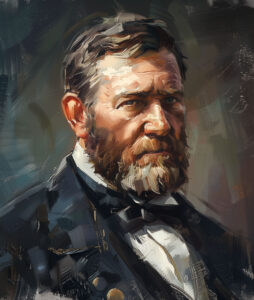Reviewed by Paul Nurse
By Miri Rubin
Penguin Books, New York
Late medieval Britain is often considered a transitional time, an era wedged uncomfortably between feudalism’s peak years and the rise of the modern age. Many observers focus on the period’s volatility and overall nastiness rather than viewing it as an integrated whole.
Now comes a volume designed to tone up an often undervalued era. Miri Rubin’s The Hollow Crown — the title is taken from a line in Shakespeare’s Richard II — is the latest volume in the Penguin series of British history texts. Professor of medieval history at the University of London, Rubin is nothing if not ambitious in scope. She aims to present an inclusive portrait of the economic, political, ecclesiastic, diplomatic and social factors affecting English life between 1307 and 1485 — a crowded pair of centuries on the British historical stage.
The horrors we rightfully associate with the age are all here: the butchery of the off-and-on Hundred Years’ War (which England effectively lost), the Peasants’ Revolt, the War of the Roses, famine and near-continual political conspiracy and death — with five English monarchs deposed and five more dying violently.
Above all else, the Black Death hovers like a ravenous dragon, arriving without warning in 1348 to reduce the population by perhaps as much as half. The survivors were traumatized, but economically better off. A reduced labor force could demand higher wages; farming had to diversify due to the labor shortage. More and better food became available.
Rubin’s main theme is that while England in the late Middle Ages (Scotland and Wales are mentioned only sporadically) was a dangerous place and time to be alive, the era did much to define the nature of Britain. As Rubin demonstrates, the rich social and cultural milieu of the time set the stage for early modern Britain to appear shortly.
Plague, unrest and famine aside, this is also the period that saw the establishment of a distinctively English style of architecture (English Perpendicular). Geoffrey Chaucer wrote the first great English work with The Canterbury Tales; printing appeared; feudalism disappeared. The English language supplanted Norman French as the language of government and would soon blossom with the works of Sidney, Spenser, Shakespeare and Marlow.
The author’s scattergun approach to each of her topics often works, giving the reader a sense of the period as the narrative segues from peasant to prince, monk to manor house, skipping nimbly between the classes and the issues separating them. By trying to cover too much, however, there are times when The Hollow Crown becomes a jumbled mess — like a confused movie with too many jump cuts.
Rubin is most gripping when dealing with the perpetually dicey political situation — the seemingly endless parade of kings, princes and pretenders vying for ultimate power and expanded territory: from the valiant warrior-kings Edward III and Henry V to the ineffectual Richard II and the notorious Richard III.
The volume ends almost inevitably with the 1485 Battle of Bosworth, which saw the death of the last Richard and the crowning of Henry VI, and changed the fiscal and administrative management of the English government decidedly for the better. The new king effectively ushered in the English Renaissance and stabilized the country following terrifically unsettled times. More than a few times The Hollow Crown can be a trial to wade through, but it is well worth the effort.




